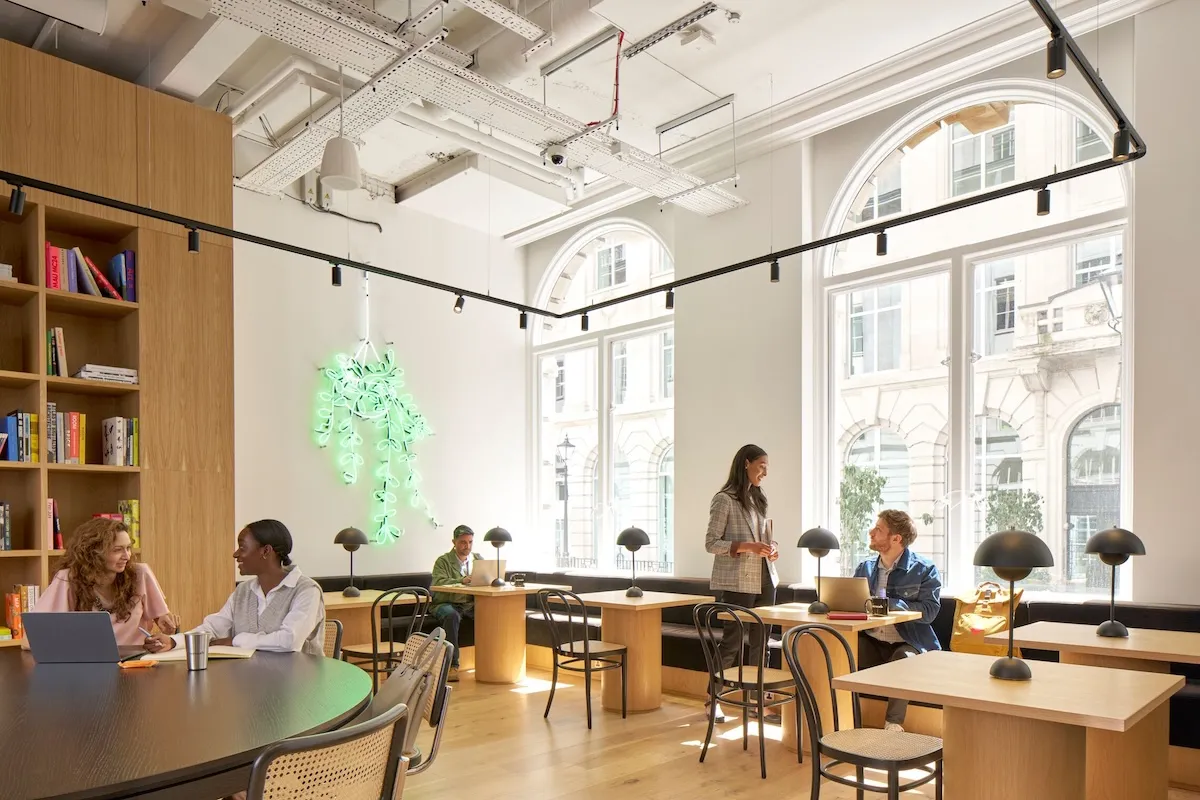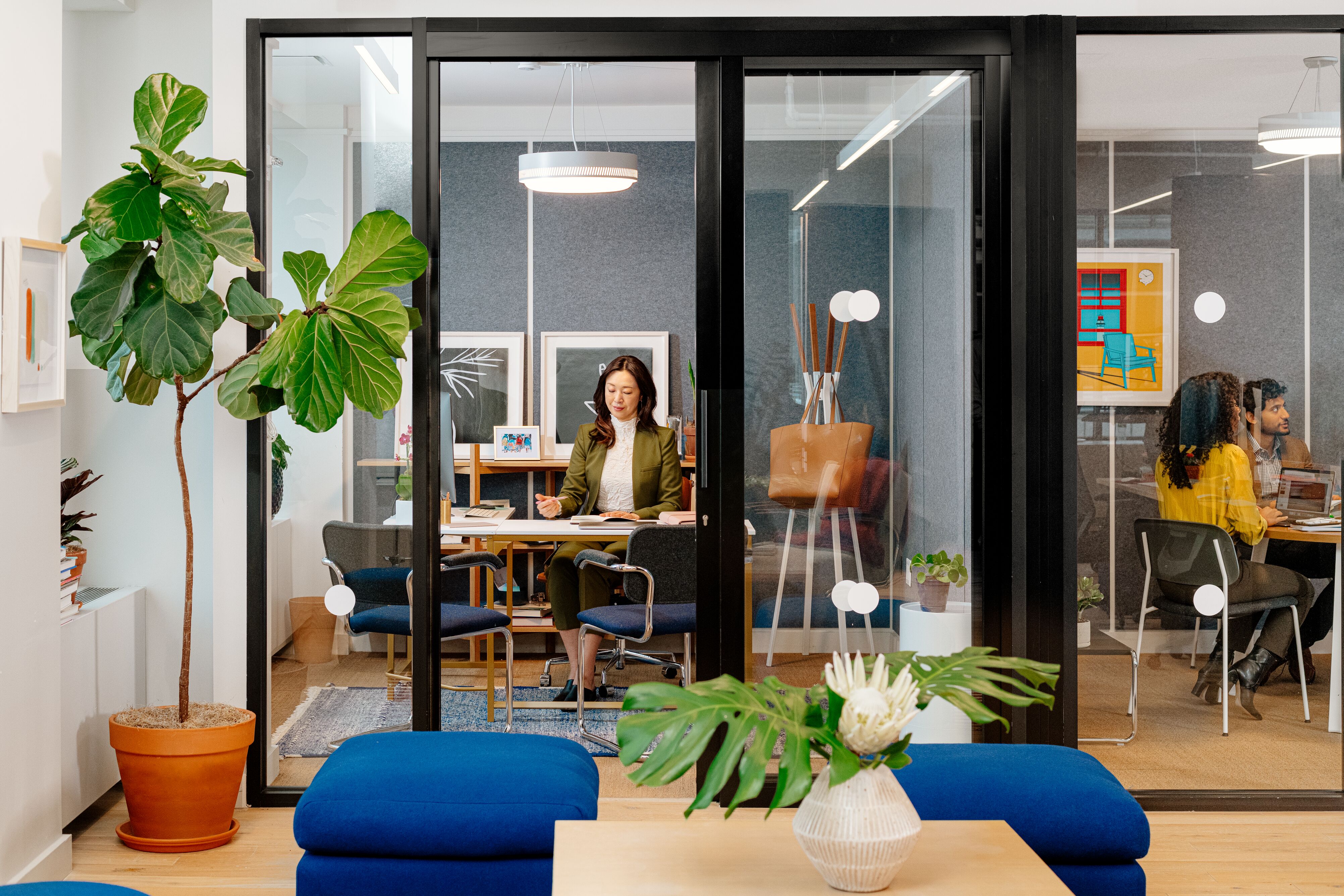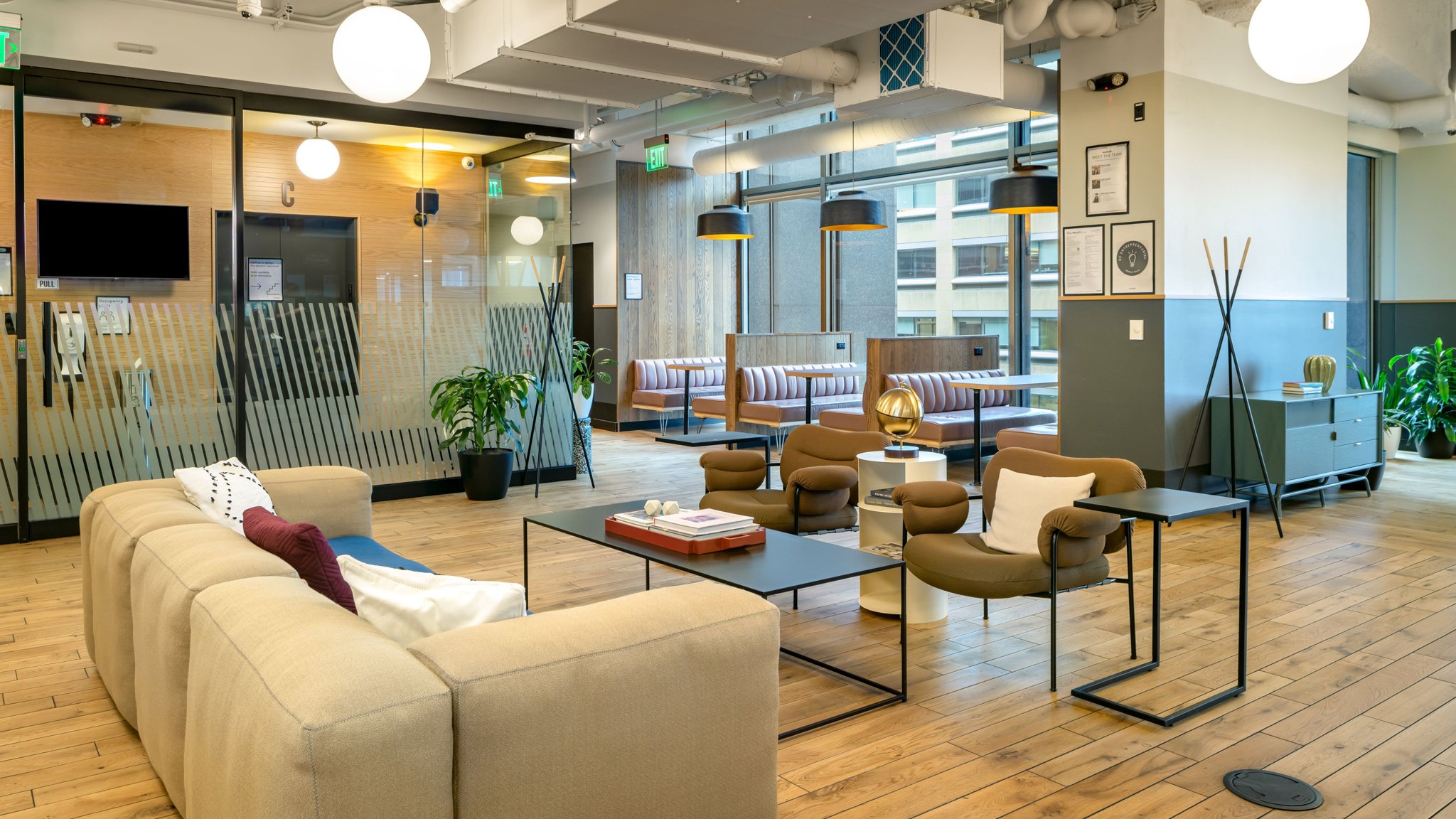The design of a space impacts how calm, relaxed, and inspired people feel, and hence how productive and engaged they are. The right office design is powerful. It can boost mood and productivity, and help businesses attract talent. Architectural elements such as internal staircases and centralized kitchens, for example, facilitate spontaneous interactions, which is why you’ll find them in many WeWork locations. Color is also extremely important in helping employees have a good day at the office: Touches of yellow and orange stimulate creativity, and blue and green are calming.
The team behind getting this just right at WeWork is the in-house design team. Interior designers source the furniture, and artists create the paintings, photographs, and neons that adorn every location. Their task is to make these spaces feel vibrant and energized. The goal: inspiring employees with the creativity of their workspaces.
Increasingly, artists are taking their work from not just being on the walls but becoming physical manifestations of art in 3D form—customized furniture you won’t find anywhere else.
That furniture could be completely designed and crafted in-house. Or it could be a piece of fabric designed by the team and plastered onto an existing piece of furniture. The idea is the same: to create chairs, benches, ottomans, nooks, and coffee tables that can’t be found anywhere else. These pieces of furniture often reflect the local culture where the space is located, or the history of the building.
“The customized process is important to us so the space feels really considered. It’s something that our competitors aren’t doing,” says David Silverstein, former art director of special projects at WeWork. “That level of detail and care about the experience of the members that’s tailored to their specific building is very important to us.”
Sculptures allow the art team to experiment with different media
Creating customized furniture is the natural diversification of medium in what the art team does, says Silverstein. “We’re pushing the limits by doing more sculpture, creating more 3D items, more installations and interactives, so that everything we do isn’t just a canvas on the wall or a framed photograph.”
Bengaluru, India


This bench in WeWork Prestige Central in Bengaluru, India, was sketched out by Silverstein and crafted from scratch. He handpainted a plywood box with a panther and local flora, and topped it with a cushion made by a local fabricator the team worked with. This location in Bengaluru—part member space, part regional headquarters—contains several nods to local culture and craftspeople. There are hand-painted Indian murals, a Jaisalmer yellow sandstone top on the community table, and cane and bamboo furniture made by a local vendor.


This fiberglass bench, also in Prestige Central, was drawn up by designer Bailey Sullivan. It’s essentially a modern art sculpture in black and white that functions as a piece of furniture. Custom furniture such as this will often be placed in central areas, such as near an elevator bank or in a common space in WeWork locations—spaces that are usually treated with a bit more attention since they’re open and shared.
Boston, Massachusetts
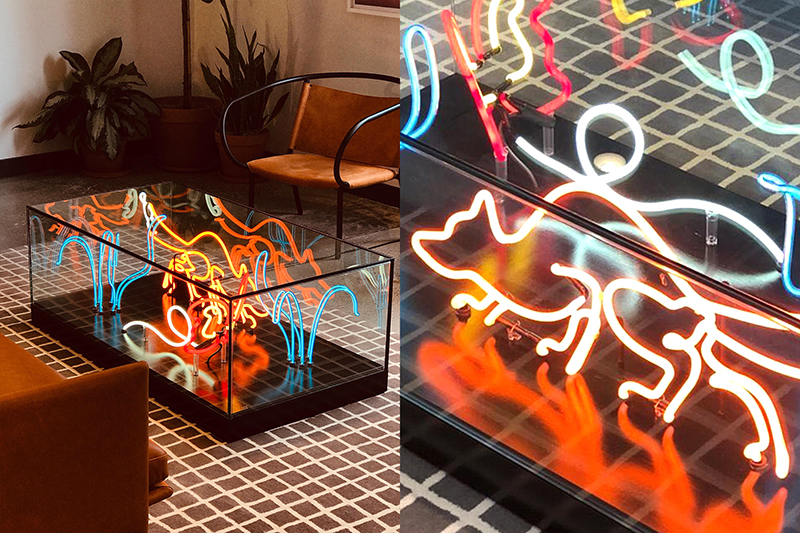
This glass coffee table at WeWork 501 Boylston St in Boston was drawn up by designer Vin Conti and created from scratch. The glass box, with neon designs of animals and flora inside, is a representation of one of the dioramas in the old Boston Society of Natural History, which used to be housed in this space. “I chose things that would look really cool lit up in neon,” says Conti. “I’ve always loved foxes, and thought one would look amazing as a neon. The butterfly was an easy second choice because of the fun, twisty flight trail.”
Custom prints make spaces feel unique and special
Besides crafting original furniture, the team also designs textiles. Some of these customized textiles will live as rugs or throw blankets. Others will be used to reupholster existing pieces of furniture, such as an ottoman or a chair. Some textiles are inspired by local patterns. The idea, says Silverstein, is to build up a library of custom textiles that can be used across any of WeWork’s global locations. The team prefers this increased customization to sourcing existing pieces of fabric that can be found in any other space. This helps make every detail of a WeWork space feel unique.
Bogota, Colombia

These back cushions at WeWork Carrera 19 in Bogota are covered in a customized fabric, designed by Eric Friedensohn. They’re inspired by the Mola pattern, a traditional motif of the Kuna people who reside in Panama and Colombia.
Prints lend an air of playfulness to the office
Incorporating a sense of playfulness in the workplace allows our brains to be more flexible, which is essential to thinking creatively and innovatively. Playfulness can come in the form of unstructured activities, such as an untimed brainstorming session. It can also be reflected in the choices of colors and patterns for furniture in a workspace.
London, United Kingdom

This leopard on bright orange-red fabric at WeWork 10 York Rd in London is a whimsical print designed specifically for the space. Displayed on the back cushion of a chair, it brings a spot of joy to any conference room.
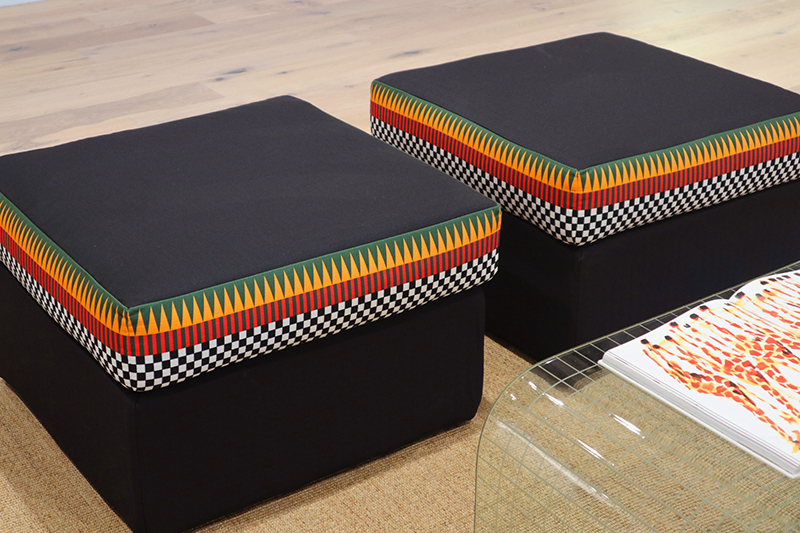
The colored triangles and checkered boxes bring a splash of color to these ottomans at WeWork 10 York Rd.
WeWork’s design ethos is an elevated departure from standard fare. For the design team, something that can be sketched out and designed from scratch is preferable to something that can be purchased. A piece of furniture created for a specific space can be whimsical and surprising, which breaks up the workday for employees in delightful ways.
Silverstein believes there’s a higher purpose to the design. “These things are cool and unique, but in the end, it’s about creating a more unique experience for members—the thousands of people who work in WeWork buildings around the world every day,” he says.
This article was originally published on November 26, 2019, and has been updated throughout by the editors.
Anjie Zheng is the managing editor of Ideas by WeWork. Previously, she was a reporter for the Wall Street Journal. Her work has also appeared in Fast Company, Quartz, and LitHub.





